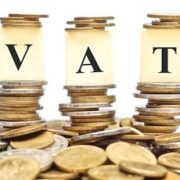
An individual can only charge VAT if his/her business is registered for VAT. VAT is charged on things like the following:
- Business sales- for example selling goods and services
- Selling business assets
- Hiring or loaning goods to someone
- Commission
- Business goods used for personal reasons
- Items sold to staff such as canteen meals
- ‘non-sales’ such as bartering, part-exchange and gifts
These are known as ‘taxable supplies’. There are different rules for charities.
The responsibilities of VAT- registered businesses include the following:
- They must charge VAT on their goods or services
- They may reclaim any VAT they have paid on business-related goods or services
If you are a VAT-registered business, you must report the amount of VAT that you have charged and the amount of VAT that you have paid to HMRC (HM Revenue and Customs). This is done through your VAT return which is usually due every 3 months.

One must account for VAT on the full value of what they sell, even if they:
- Receive goods or services instead of money (for instance if they take something in part-exchange)
- Haven’t charged any VAT to the customer. Whatever price they charge is treated as including VAT
In case, one has charged more VAT than paid, in that case, he/she has to pay the difference to HMRC. If one has paid more VAT than charged, then he/she can reclaim the difference from HMRC.
VAT Rates
There are 3 different rates of VAT which are as follows:
- Standard rate: Most of the goods and services are standard rate. One should charge this rate unless the goods or services are classed as reduced or zero-rated. This includes the following:
- Any goods below the distance selling threshold that one supply to non-VAT registered EU customers. If one goes over the threshold, he/she will have to register for VAT in that country.
- Most services one supply to an EU non-business customer.
- Reduced rate: When one charge this rate, it can depend on what item is as well as the circumstances of the sale, such as the following:
- Children’s car seats and domestic fuel or power are always charged at 5%
- Mobility aids for older people are only charged at 5% if they are for someone over 60 and the goods are installed in their home
- Zero rate: Zero-rated means that the goods are still VAT-taxable, however the rate of VAT that one must charge the customers is 0%. One still have to record them in VAT accounts and report them on VAT return. Examples include the following:

- Books and newspapers
- Children’s clothes and shoes
- Most goods one export to non-EU countries
- Motorcycle helmets
- Goods one supply to a VAT registered EU business
If one needs to send goods to the EU, he/she will need his/her VAT number and paperwork proving that the goods have been sent within certain time limits which is generally 3 months.
Rates can change and one must apply any changes to the rates from the date they change.
For more information, you can call on VAT Helpline Number.
